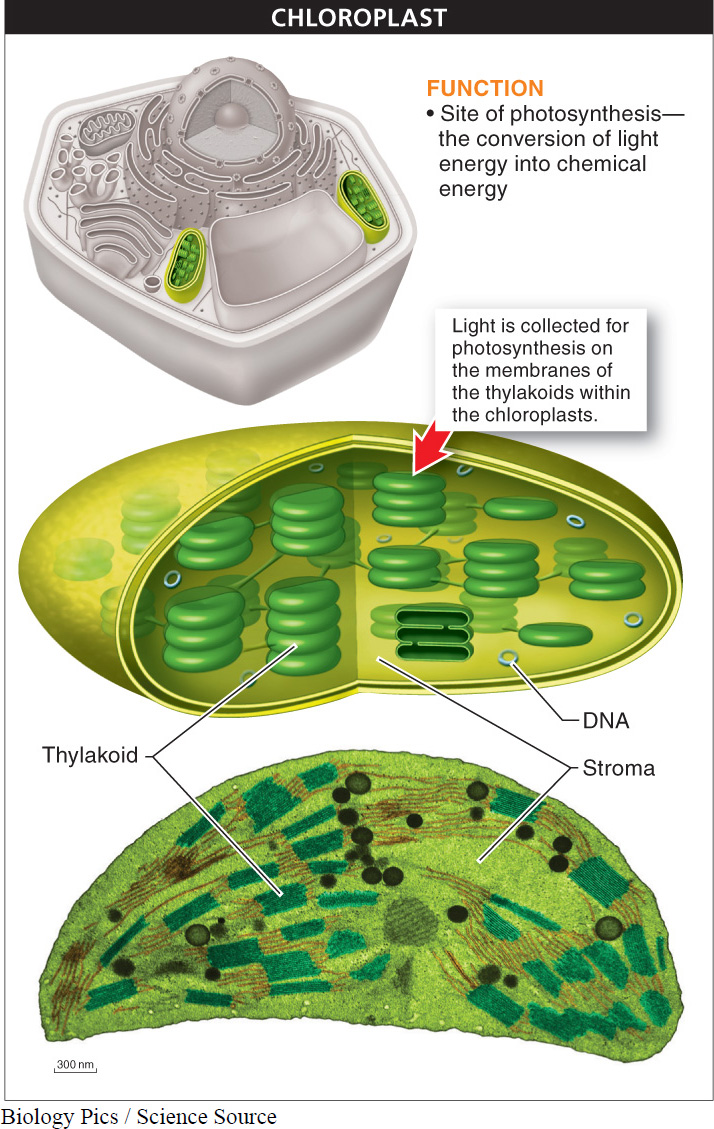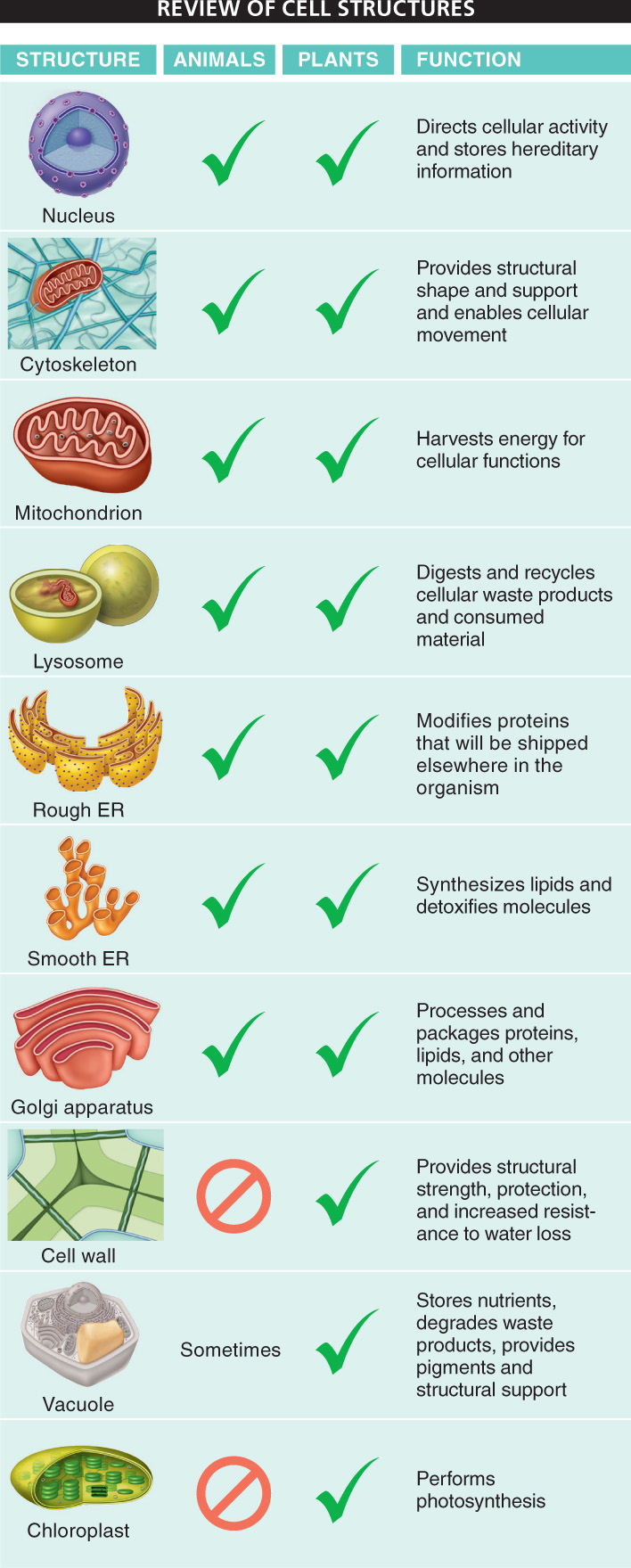3.22: Chloroplasts are the plant cell’s solar power plant.
It would be hard to choose the “most important organelle” in a cell, but if we had to, the chloroplast would be a top contender. The chloroplast, an organelle found in all plants and eukaryotic algae, is the site of photosynthesis—the conversion of light energy into the chemical energy of food molecules, with oxygen as a by-product. Because all photosynthesis in plants and algae takes place in chloroplasts, these organelles are directly or indirectly responsible for everything we eat and for the oxygen we breathe. Life on earth would be vastly different without the chloroplast (FIGURE 3-41).

Figure 3.41: The chloroplast: location of photosynthesis.
In a green leaf, each cell has about 40–50 chloroplasts. This means there are about 500,000 chloroplasts per square millimeter of leaf surface (that’s more than 200 million chloroplasts in an area the size of a small postage stamp). Chloroplasts are oval, somewhat flattened objects. On the outside, the chloroplast is encircled by two distinct layers of membranes (similar to the structure of mitochondria). The fluid in the inside compartment, called the stroma, contains some DNA and much protein-making machinery.
With a simple light microscope, it is possible to see little spots of green within the chloroplasts. Up close, these spots look like stacks of pancakes. Each stack consists of numerous interconnected little flattened sacs called thylakoids, and it is on the membranes of the thylakoids that the light-collecting for photosynthesis occurs. (In Chapter 4, we discuss the details of how chloroplasts convert the energy in sunlight into the chemical energy stored in sugar molecules.)
A peculiar feature of chloroplasts, mentioned in Section 3-3, is that they resemble photosynthetic bacteria, particularly with their circular DNA (which contains many of the genes essential for photosynthesis). Also, the dual outer membrane of the chloroplast is consistent with the idea that, long ago, a cell engulfed a photosynthetic bacterium, enveloping it with its plasma membrane in endocytosis. These features have given rise to the belief that chloroplasts might originally have been bacteria that were engulfed by a predatory cell. According to the endosymbiosis theory (see Section 3-3), the bacteria remained alive and, rather than becoming a meal, became the cell’s meal ticket, providing food for the cell in exchange for protection.
FIGURE 3-42 summarizes the major parts of a cell, in animals and plants, and their functions.

Figure 3.42: Review of major cellular structures and their functions.
TAKE-HOME MESSAGE 3.22
The chloroplast is the organelle in plants and algae that is the site of photosynthesis—the conversion of light energy into chemical energy, with oxygen as a by-product. Chloroplasts may originally have been bacteria that were engulfed by a predatory cell by endosymbiosis.
What is the main function of chloroplasts?

